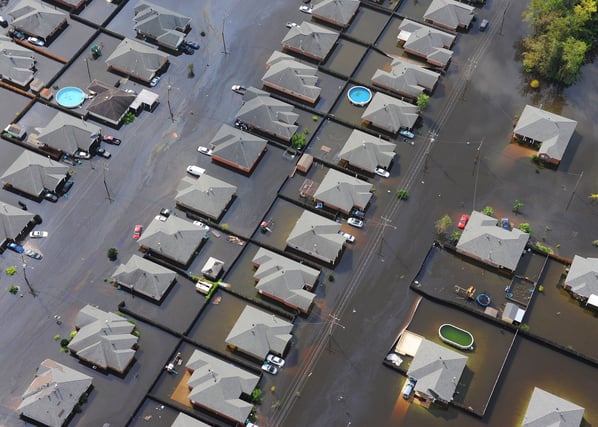
Answers to Help You Prepare for Disaster Relief Fundraising

When a disaster hits, people instantly go into hero mode. They spring into action seeking to donate, to volunteer, to make a difference.
For organizations on the front lines of disaster relief, an online fundraising presence is essential. You have to let potential donors know you are a key player and need their support. Every minute you aren’t out there, the donations you need to do your work are going somewhere else.
While the services provided by typical front-line organizations may be different, your charity can follow the same guidelines to successfully prepare for disaster fundraising. Here are four common questions about disaster fundraising:
How can I prepare to fundraise for a disaster?
There are a few steps your charity can take today to prepare for disaster fundraising. It’s important to have a plan now — before disaster strikes. Setting the stage without calamity on the horizon will make all the difference should you find yourself in a situation where you need emergency funds.
- Establish a strategy based on the severity of the disaster. A smaller scale disaster may require only a modest digital fundraising plan, while a massive disaster would require a robust print and digital plan. Build out a strategic action plan for every level.
- Prepare your media. Create a keyword list for search, and set your budget for bidding on those words. Build a print media list. Get co-op agreements in place. If you’re interested in mobile marketing, set that up in advance as it can take weeks.
- Finalize your creative. Build your print and email templates with generic copy and photography so they can be quickly and easily updated with specific information and relevant photos. Alert on-the-ground resources that they will need to provide stories and photos as soon as possible, and provide direction and sample photos to ensure you get exactly what you need.
- Gather your team. Know who your key stakeholders are, and set clear expectations of what will be needed from them if a disaster hits.
When a potential disaster is in the forecast, alert your team. Gather your stakeholders. Set expectations again. Verify your media contacts. Put your vendors on alert so they’re prepared.
What should I do once a disaster hits?
Once a disaster hits and you’ve determined its level of severity, you should refer back to your appropriate strategic action plan and get started.
- Get digital display and search efforts running immediately so people can find your organization when they’re looking for ways to help.
- Change your home page so people know you’re involved in the disaster relief efforts.
- Edit your donation page to include the disaster as a gift designation for continuity and credibility.
- Be active on social media about your commitment to helping people during the disaster.
- Deploy your first fundraising email within 24 hours.
- For a larger scale disaster with long-term recovery needs, consider including an urgent insert in the first upcoming direct mail appeal or mailing a dedicated disaster appeal.
How will I know when it’s time to stop fundraising for the disaster?
Your fundraising campaign timing depends on the severity of the disaster and ongoing need. But it also depends on the attention the disaster is getting in the media. Although your relief efforts may last weeks, or even months, people’s attention spans don’t last as long. Once the donations wane substantially, it’s probably time to end or scale back your efforts. Some digital presence may continue for a while after other efforts end.
How do I follow up with disaster donors?
It’s important to remember that disaster donors don’t behave like other donors (unless they’re already donors, too). They may never give again or may only give if another disaster hits. Still, you definitely don’t want to ignore them. They did a great thing, and you should make them feel good about it — their heroic hearts helped to heal the world! Send special updates and thank-yous, and look for cost-effective ways to engage them.
When a disaster hits, no matter the severity, it’s important to be prepared so people affected by the disaster can get the help they need. By creating your disaster fundraising plan ahead of time, you’ll ensure your organization will be able to make the biggest impact when it matters most.
